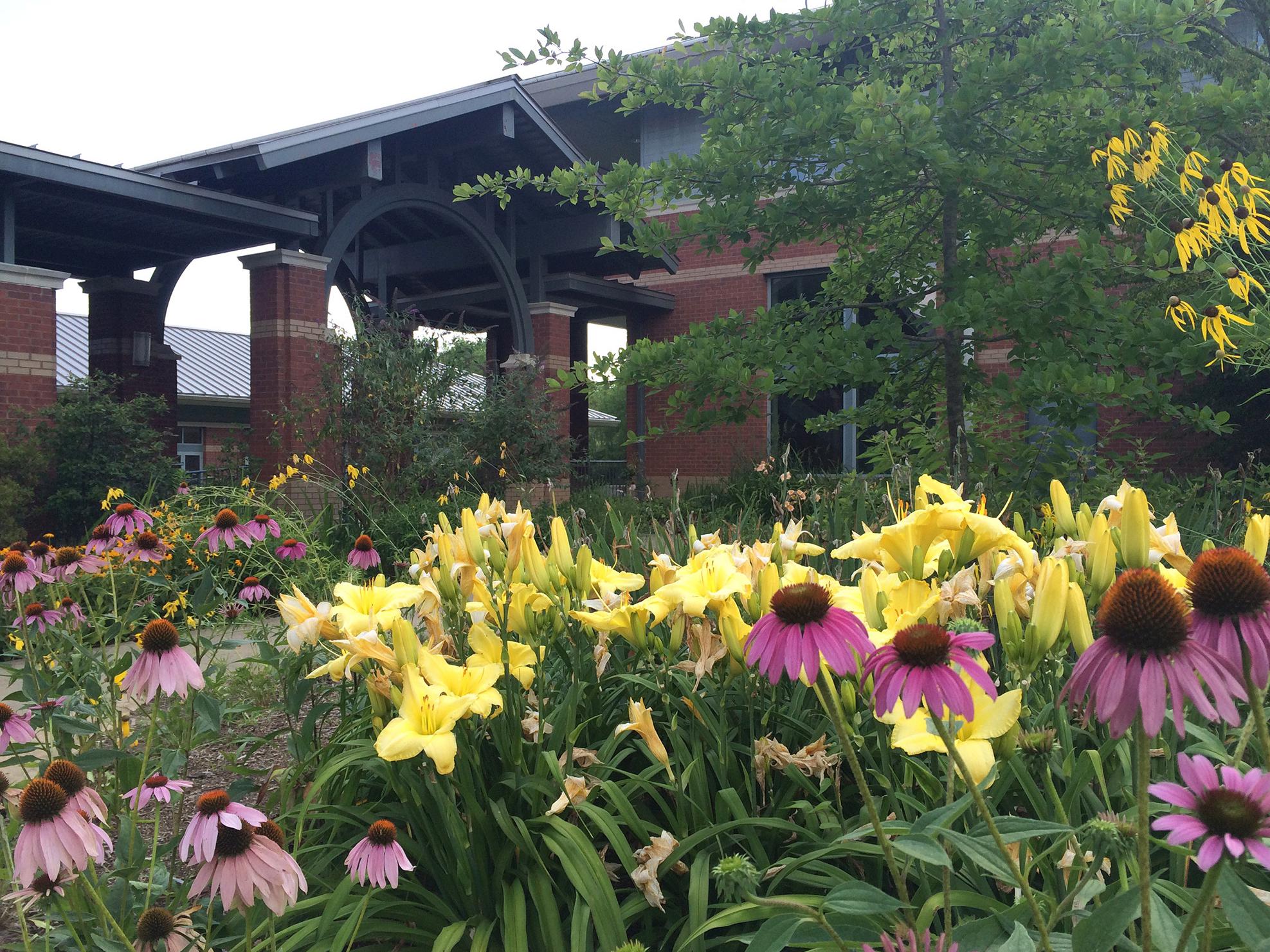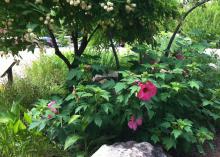Information Possibly Outdated
The information presented on this page was originally released on October 16, 2018. It may not be outdated, but please search our site for more current information. If you plan to quote or reference this information in a publication, please check with the Extension specialist or author before proceeding.
Include plant diversity for healthy landscapes
STARKVILLE, Miss. -- Plant diversity is critical to the health of an ecosystem, but a single landscape can significantly enhance biodiversity.
Bob Brzuszek, Mississippi State University Extension Service professor of landscape architecture, said the concept of biodiversity recognizes the unique contribution different plants make in sustaining an environment.
“In a biodiverse ecosystem, each organism plays an important role and helps regulate natural processes and growth cycles,” Brzuszek said. “That means that if one part of a natural environment becomes too dominant, another part will bring balance back to the system.”
Plants in the landscape provide many services to the local ecosystem, including shade, wildlife habitat, clean water, healthy soil and clean air.
“If we only use a small variety of plants and those plant types become sick or are attacked by a pest, the landscape will take a long time to recover,” Brzuszek said.
Tim Schauwecker, a Mississippi Agricultural and Forestry Experiment Station associate professor in the MSU Department of Landscape Architecture, said having biodiversity is good in both residential and commercial landscapes, as it ultimately benefits humans.
“I value biodiversity because it represents the historical development of the natural world that we are primarily responsible for nurturing or not,” Schauwecker said. “For me, this is largely an ethical decision, but there are plenty of economic reasons for the preservation of biodiversity, including habitat for pollinators and wildlife, food species preservation and recreation.”
Monoculture, which has a very low diversity, is the opposite of biodiversity, which includes a variety of plants.
“Too much monoculture is not a good thing, but there are certainly situations where we benefit from monoculture systems,” he said. “For example, the high-quality turf that my son plays soccer on is designed to be a monoculture, and I think that is a good thing.”
Food crops are also positive monocultures. However, monoculture typically is not a positive in landscape situations. Homeowners who find a lack of biodiversity in their landscapes can take steps to increase it.
“You can buffer all areas where water runs, which means you stop mowing it every week and learn the plant species that come in over time. Then, slowly over time, you can decide which ones to keep and which ones to remove based on your long-term goals,” Schauwecker said.
A simpler step is to bring in diversity with container gardens, which can be added to even tiny spaces such as those offered in garden homes and on balconies. They can grow a variety of native plant species.
It is often easier to keep biodiversity in a new construction setting rather than try to bring it back once removed.
“The up-front costs of preserving existing biodiversity are higher in comparison to the typical practice of clearing land extensively and bringing in all new plant material,” he said.
Brzuszek said recent studies have found that even small efforts at adding plant diversity into a landscape can help save many threatened animal and insect species.
“A great example is monarch butterflies,” Brzuszek said. “Their populations are dropping dramatically because of loss of habitat in the wild, and many backyard gardeners are adding plants such as milkweed and other perennials. This is making a difference in supporting monarch butterfly populations.”
Brzuszek said a diversity of plants encourages a diversity of insects, providing a stable food source for 96 percent of bird species.
“All gardens have some destructive insects or pests, but the key is to encourage beneficial insects which control the harmful insects,” he said. “Plus, the more plants and flowers that are added to a garden, the more beautiful it is going to be.”
The MSU Extension Service and landscape architecture department created Mississippi Smart Landscapes as the go-to digital source for those looking for simple, sustainable home landscapes. The site -- http://extension.msstate.edu/smartlandscapes -- offers a variety of information to support environments that encourages wildlife, use water wisely, lower our energy costs, and benefit both homes and neighborhoods.











